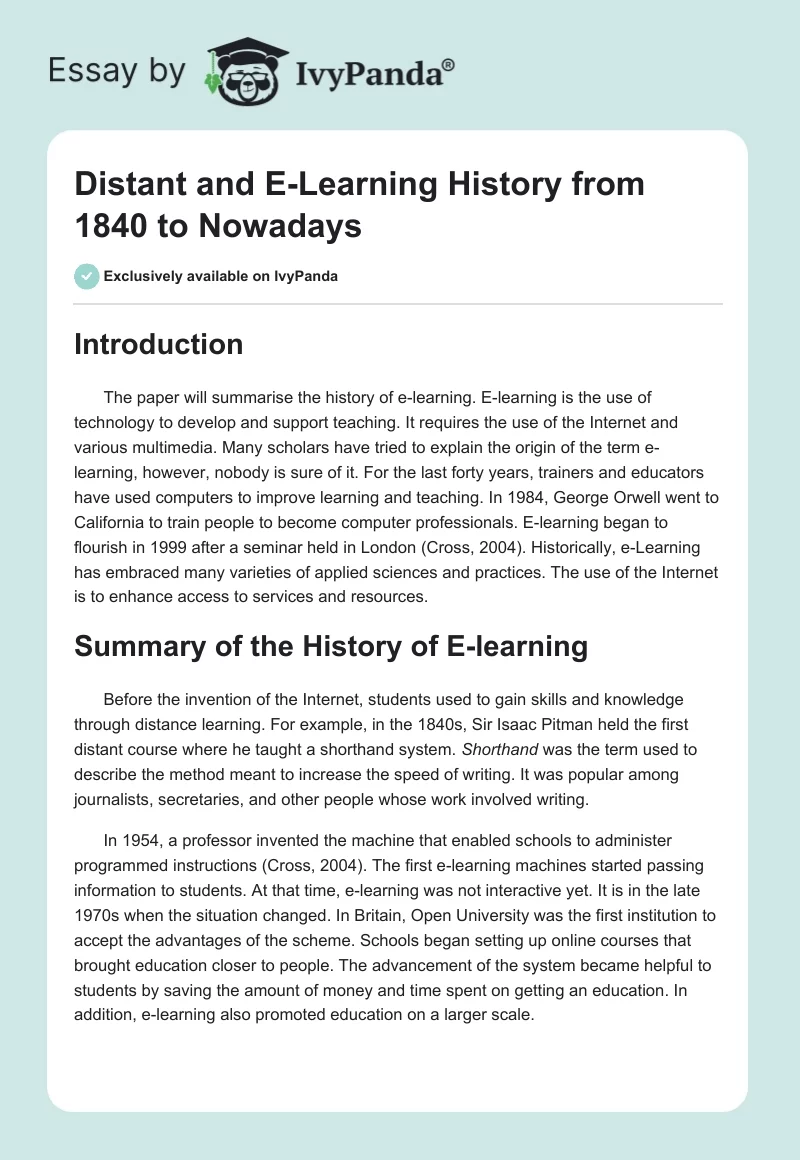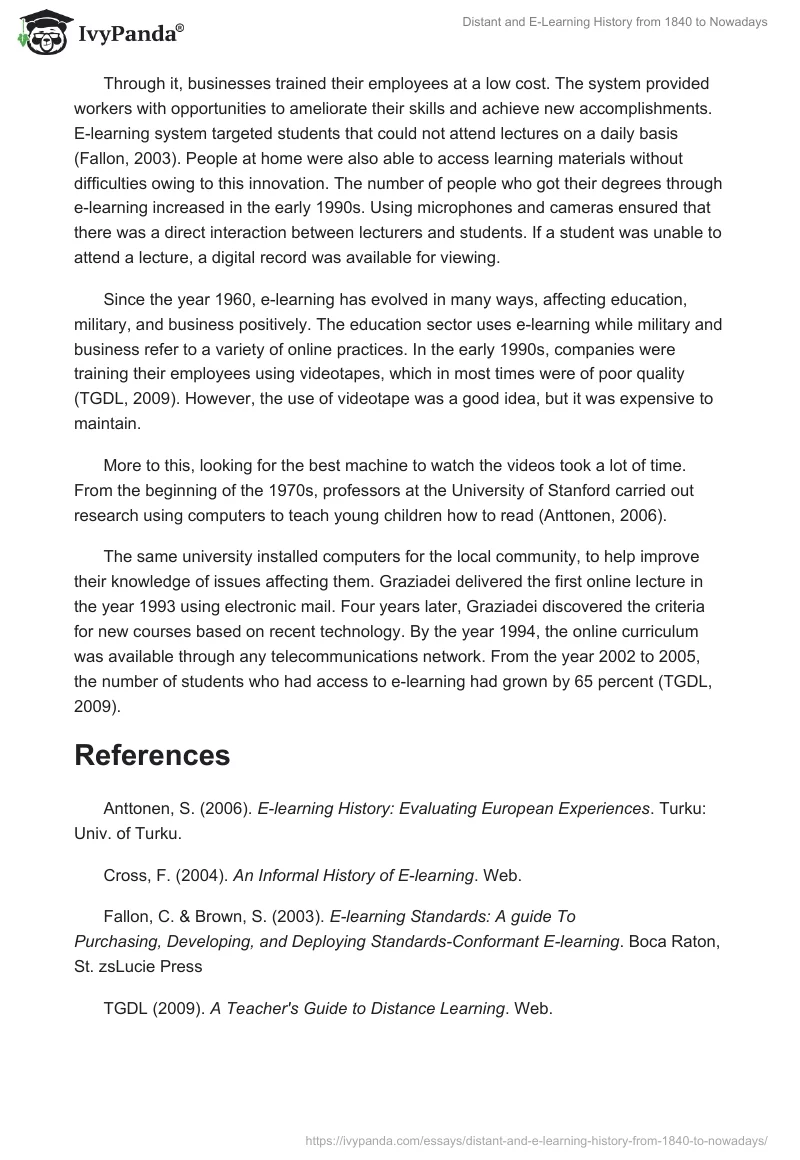Introduction
The paper will summarise the history of e-learning. E-learning is the use of technology to develop and support teaching. It requires the use of the Internet and various multimedia. Many scholars have tried to explain the origin of the term e-learning, however, nobody is sure of it. For the last forty years, trainers and educators have used computers to improve learning and teaching. In 1984, George Orwell went to California to train people to become computer professionals. E-learning began to flourish in 1999 after a seminar held in London (Cross, 2004). Historically, e-Learning has embraced many varieties of applied sciences and practices. The use of the Internet is to enhance access to services and resources.
Summary of the History of E-learning
Before the invention of the Internet, students used to gain skills and knowledge through distance learning. For example, in the 1840s, Sir Isaac Pitman held the first distant course where he taught a shorthand system. Shorthand was the term used to describe the method meant to increase the speed of writing. It was popular among journalists, secretaries, and other people whose work involved writing.
In 1954, a professor invented the machine that enabled schools to administer programmed instructions (Cross, 2004). The first e-learning machines started passing information to students. At that time, e-learning was not interactive yet. It is in the late 1970s when the situation changed. In Britain, Open University was the first institution to accept the advantages of the scheme. Schools began setting up online courses that brought education closer to people. The advancement of the system became helpful to students by saving the amount of money and time spent on getting an education. In addition, e-learning also promoted education on a larger scale.
Through it, businesses trained their employees at a low cost. The system provided workers with opportunities to ameliorate their skills and achieve new accomplishments. E-learning system targeted students that could not attend lectures on a daily basis (Fallon, 2003). People at home were also able to access learning materials without difficulties owing to this innovation. The number of people who got their degrees through e-learning increased in the early 1990s. Using microphones and cameras ensured that there was a direct interaction between lecturers and students. If a student was unable to attend a lecture, a digital record was available for viewing.
Since the year 1960, e-learning has evolved in many ways, affecting education, military, and business positively. The education sector uses e-learning while military and business refer to a variety of online practices. In the early 1990s, companies were training their employees using videotapes, which in most times were of poor quality (TGDL, 2009). However, the use of videotape was a good idea, but it was expensive to maintain.
More to this, looking for the best machine to watch the videos took a lot of time. From the beginning of the 1970s, professors at the University of Stanford carried out research using computers to teach young children how to read (Anttonen, 2006).
The same university installed computers for the local community, to help improve their knowledge of issues affecting them. Graziadei delivered the first online lecture in the year 1993 using electronic mail. Four years later, Graziadei discovered the criteria for new courses based on recent technology. By the year 1994, the online curriculum was available through any telecommunications network. From the year 2002 to 2005, the number of students who had access to e-learning had grown by 65 percent (TGDL, 2009).
References
Anttonen, S. (2006). E-learning History: Evaluating European Experiences. Turku: Univ. of Turku.
Cross, F. (2004). An Informal History of E-learning. Web.
Fallon, C. & Brown, S. (2003). E-learning Standards: A guide To Purchasing, Developing, and Deploying Standards-Conformant E-learning. Boca Raton, St. zsLucie Press
TGDL (2009). A Teacher’s Guide to Distance Learning. Web.


